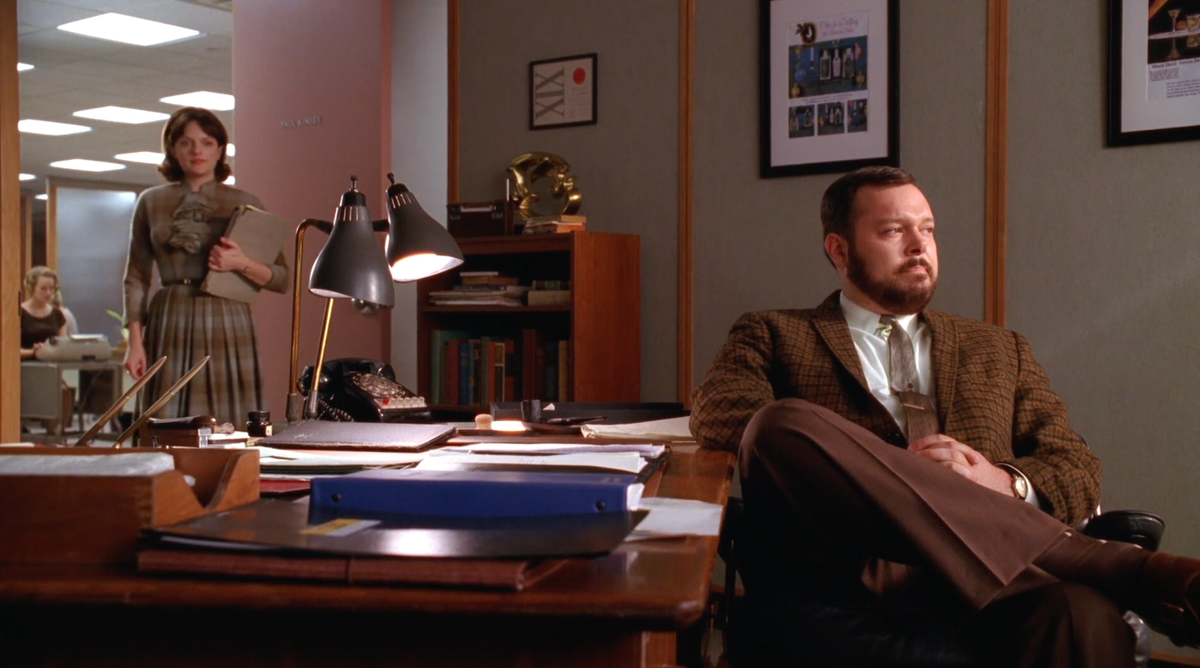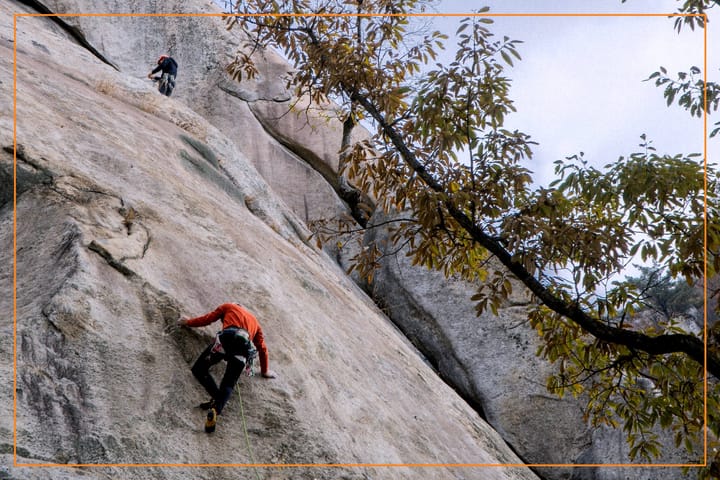Capturing Ideas
‘The faintest ink is better than the best memory’. The importance of writing it down has its most profound effect when we’re talking about story ideas. Getting everything out of the head and into the physical space makes it real. And worthy of judgement.

“There was nothing, then there was it, and then there was nothing again”
In the Mad Men Sequence of the lost idea, Paul Kinsey in under a deadline for ideas to present with Peggy to Don. When Kinsey tries to follow up Peggy, he’s at a lost for words, copping that he doesn't have any ideas. Pressed on why, he tells the truth– he had an idea and he lost it. It’s a moment where you expect Don to berate his excuses and performance, but moves unexpectedly to commiserate with him. “I hate it when that happens.”
It is such an emphatic, powerful turn not just for the characters but for the audience— especially writers. You felt seen. It’s the type of scene, the type of moment, that set Mad Men apart. I remember it to this day so viscerally for both it’s relatable empathy and sage wisdom.
Ideas and thoughts are like water through the hand for me. I can never hold on to them. Because of this, I am a fastidious notetaker when working on any project, be it solo or in a group environment. I need the paper trail to remember what ideas percolated or what was discussed along with what actions to take.
I lived by the axiom, ‘I’m not writing it down to remember it later, I’m writing it down to remember it now’ (Field Notes slogan). Or as Kinsey recites the Chinese proverb ‘the faintest ink is better than the best memory’.
I constantly review notes days later, thinking, ‘thank goodness for these notes or I’d be toast.’
Notes are all about the ‘What’. What was that thought, what was that notion, what was that idea?
The importance of writing it down has its most profound effect when we’re talking about story ideas. Whether I’m brainstorming, outlining, or writing, I’m taking freehand notes in an open brain dump. I like to get everything out of my head and into the physical space/realm to make it real.
This is important for two reasons. First, once it’s real, I can then judge it merits. The second, and probably more significant reason, is that it doesn’t get lost in the head chatter.
But for all my notes taking acumen, the one area I’m lacking is when I get a fleeting idea that randomly pops up throughout the day. These can either be holistically formed or from something I’m experiencing— reading, browsing the web, listening to a podcast, etc.
I haven’t been able to fully crack this ‘bad’ habit. I have a pen and paper with me a lot of the time, or my phone where I could peck out a note. But even with those tools I continually just let them get lost in the black hole of my mind, never to be seen from, or thought of, again. While it’s difficult to pinpoint, what I think it comes down to is creative proclivity, mental overload, and most of all, human nature.
Creative Proclivity
Generally, when an idea pops into my mind, the concurring thought is ‘huh, that’s interesting, I wonder if something could be there’. But not every idea is compelling. Sometimes, it’s an instant, ‘no’—too overwrote, obvious, or uninteresting to me to pursue.
Though, many times I begin to extrapolate it out to see if it’s even worth recording down. I take it a step further, pulling a string, starting to process the nugget in realtime. Is there something extra beyond the initial seed? I start playing the magic ‘if’ game. Where can I take this idea? What is a new perspective that feels original but authentic? From there you grow the nugget with a few possibiltles.
The problem for me is that I wait to let it bake or even when I get to that next level, with an additional layer of possibility, I just continue on. One part of my brain assumes I’ll remember and record it later. But the other half knows with ever fiber of itself that there is only a 10 percent chance of remembering later. Usually, the former wins.
Mental Overload
A part of what drives my psychological hindrance to not noting down ideas is the mental overhead of managing and tracking these ideas.
The most important need as discussed is to just get the idea out of your head. But that can lead to its own issues, with a collection of scribblings scattered all over the place. Notebooks, scrap paper, napkins, phone notes, post-it notes, envelopes. You know how it goes. The disparate nature of this system then brings you back to paralysis because now you need to remember where the idea was recorded, just as your trying to utilize it.
Human Nature
Most ideas that pop into your head aren’t worthwhile pursuing. There is a case that if it’s good, it will pop back up.
I could write a bibles worth of ideas that I’ve forgotten (if I could remember them). The other quote —in the subtitle — from the aforementioned scene of Mad Men, “There was nothing, then there was it, and then there was nothing again”, feels like a scene written by a writer as a cathartic experience.
The idea comes out of know where, distracts you for a second, then is gone as fast as it came as something else draws your attention. Even for a fleeting moment.
We’ve all been there. It’s the worst. It’s a sad feeling (as Kinsey expression shows).
To combat this, a key element is to realize, to be aware at the moment when, that you’re having the idea. Which is harder than it sounds, as you are inherently thinking about the idea, not that you are having an idea.
The next obvious step when you realize you're struck with a great idea is to stop what you are doing and record it any way possible— paper, phone, napkin— whatever is around you. But this is a habit that must be made. Trained. It is not easy. But it is the ideal.
It’s not something that I've been able to build out yet but continue to work on. I now keep my field notes by the front door ready to go.
And while making the note anywhere is what matters most, to me analogue is best in this scenario.
Using your phone seems like an obvious tool to use to record spontaneous ideas, there is the inherent risk of distraction. Even from what seems a small time of use with a purpose, I easily open my phone to lose the original intent of using it in the first place. Maybe I’m weaker than most, but I can be distracted by my notifications, red bubbles, and the like.
But there is a secondary aspect of recording your ideas— and that’s using them. While getting the idea out of the head and recorded is the key part to it all, what really can unlock the potential is collecting all the ideas in one place.
Having some sort of system is the key to make those ideas permanent. There has to be a way to collect, find, and use them when the time calls.
Digital is best in this scenario.
But admittedly, this is where complexity comes into play. The natural, easy part is getting the idea onto paper. Now deciding what to do with that paper is where it gets tricky as there is no one-size fits all approach.
The general concept is that you want your idea digitally catalogued so that they are searchable and discoverable. You type in a few words and bam it filters down to a select few ideas with those words. But what if you’re searching for something like a joke or situational idea?
Ideally, adding another layer, defined by set criteria, that you can hone in on, for whatever need you may have. Be it a tag or type of signifier, this can help you find broader needs that are as easily searched for in the idea itself.
But this adds complexity and work. You need to find a tool that can manage this system, then you need to develop the system, then input all your ideas into this system AND make sure it’s easy to input going forward. Most likely there’ll be kinks to work out and changes to be made, all adding up to an arduous, time-consuming task, and a verifiable pain in the ass. But it’s worth it.
I built an idea tracker a few years ago that I still use today. Sure it’s a bit creaky with that never quite done feeling, but it works, and I sleep better knowing all (most) of my ideas are recorded in a single place.
Check out the sidebar below on my system– Coming Soon
Conclusion
Ideas are ephemeral, it’s their nature. As a writer, artist, or creative, it’s important to move them from whispers in the wind (see my sidebar below) to tangible letters on the page (or screen). Then they become real, where you can mold them from a lump of clay into an excellent piece.
Field of Dreams & Ideas
A tangent on a metaphor of capturing ideas
Idea Tracker System
A complex way to find simple ideas





Comments ()